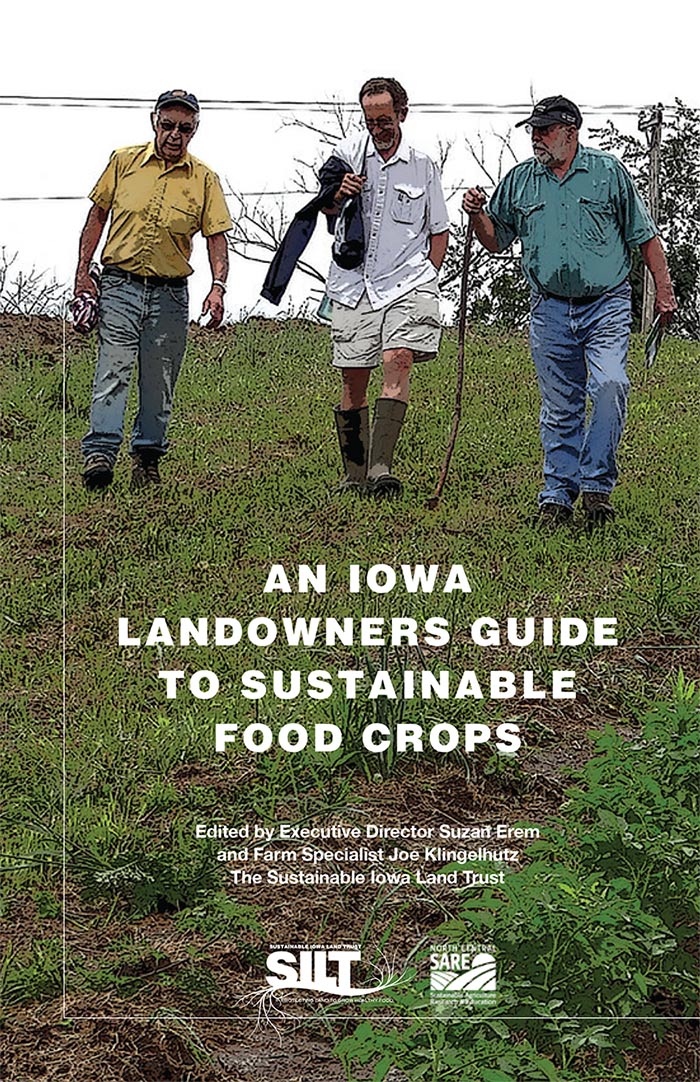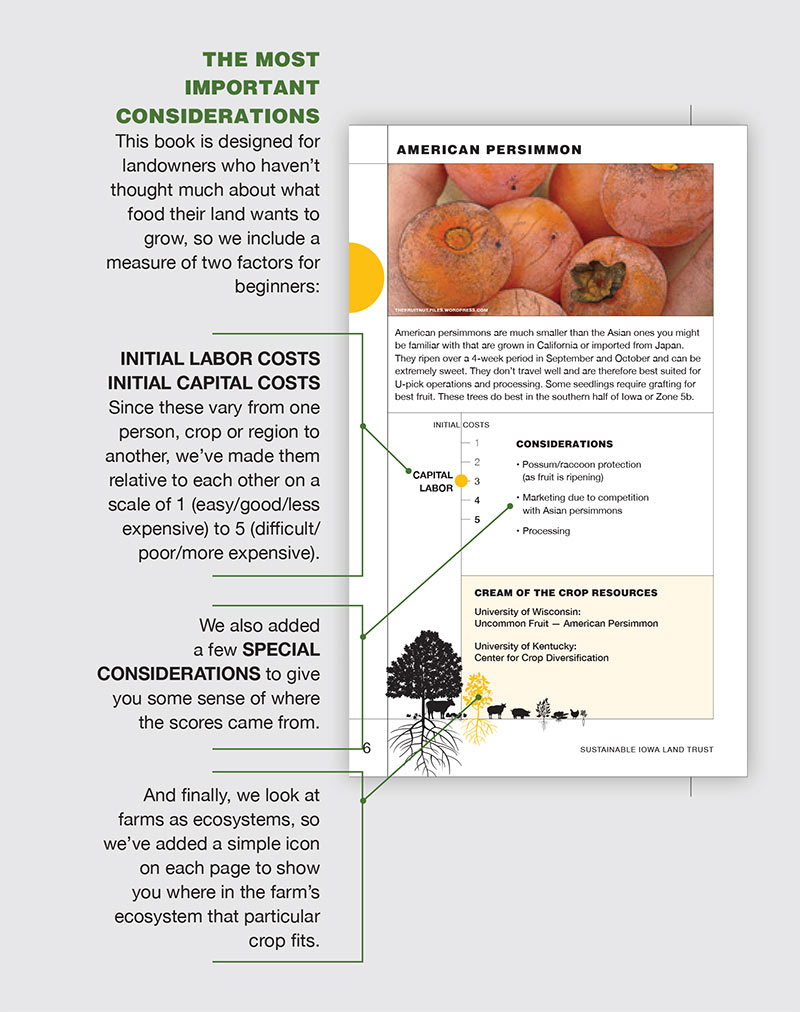Introduction

When we launched the Sustainable Iowa Land Trust (SILT) in 2015, we knew we had an uphill struggle ahead. We were about to embark on a journey to permanently transform Iowa’s landscape into one with many more prosperous, diverse market farms. We were going to ask Iowa landowners to voluntarily reduce the value of their land for a future of eco-friendly table food farms anyone could afford. One gift would solve many of Iowa’s economic and ecological problems and do so for generations to come. Future farmers could access land, repopulate small towns, increase the supply of fresh, naturally-grown fruits, vegetables and meat and sequester carbon through managed grazing. Maybe someday, their land gifts would help end Iowa’s standing as the No. 1 contributor to the Dead Zone in the Gulf of Mexico.
But we underestimated a greater challenge: After 70 years of market consolidation and the policies that encouraged it, Iowans had forgotten their land could grow table food. Our local food system had eroded. So-called experts proclaimed there was “no market” for food. Yet trucks full of fruits, vegetables and meat rumbled through our state at 70 mph every day. People hadn’t stopped buying food. They just bought it from California, Mexico and China now — because those were their only choices left.
Farmers were growing commodities because those were their only choices left. But when farmers have more choices, food consumers do, too. Today’s landowners have the power to provide those choices by taking land debt out of the equation for farmers. You hold Iowa’s future in your hands and SILT is here to help. SILT Farms are, by definition, economically, ecologically and socially sustainable — all three at all times. They seek diverse income streams, mimic nature to build healthy soil and are anchored in their communities.
Farmers will tell you that owning land is a responsibility. What we do with our land while we’re here says a lot about us when we’re gone. If you value healthy soil, clean water, agricultural diversity and resilience, contact us at the Sustainable Iowa Land Trust to discuss the possibilities.
This material is based upon work that is supported by the National Institute of Food and Agriculture, U.S. Department of Agriculture, under award number 2018-38640-28416 through the North Central Region SARE program under project number ONC19-055. USDA is an equal opportunity employer and service provider. Any opinions, findings, conclusions, or recommendations expressed in this publication are those of the author(s) and do not necessarily reflect the view of the U.S. Department of Agriculture
SILT encourages allies and friends in our neighboring states to replicate this publication, adding species particular to your region and removing those that are not appropriate.
ACKNOWLEDGEMENTSThe editors thank the farmers upon whose advice and experience this book is based and the nonprofits that allowed us to borrow from their research. The editors take responsibility for any typographical errors, omissions and inaccuracies. See the online version at silt.org for the most updated information. Special thanks to Kaitie Adams of the Savanna Institute, Kim Alexander of Alexander Farms, David Cavagnaro of the Pepperfield Project, Tom Wahl and Kathy Dice of Red Fern Farm, Denise O’Brien of Rolling Acres Farm, Patrick O’Malley of Iowa State University.
Design by Benson and Hepker DesignPrinting by Goodfellow Printing Company
HOW TO USE THIS GUIDE
 DETERMINING THE BEST CROPS FOR IOWA
DETERMINING THE BEST CROPS FOR IOWA
We made tough decisions to limit the list of crops in this guide to a manageable number. Farmer advisers based their choices on crops that are relatively easy, can be grown in most of Iowa and have or can build markets. And remember, there’s more to farming than growing the food. Value-added products, agritourism, education and just plain fun can be part of processing and selling the food you grow.
THIS GUIDE IS JUST A STARTEvery page includes one or two non-profit or educational “Cream of the Crop” resources. At the back of the book is a more extensive list. The digital version at silt.org has the link to the resource at time of publication. Find a crop you’re interested in and then do more research! People, institutions and organizations are willing to help you on your journey.
THEN WHEN YOU’RE READYWhen the time comes, we hope you’ll contact us at the Sustainable Iowa Land Trust to discuss the many ways to protect your land as a clean, healthy food farm for generations to come. Protection is available in two forms – either a conservation easement attached to your deed that spells out future uses of the land. You retain ownership. Or a land donation either now or in the future that assures your land stays in sustainable food production while helping sustain SILT as well.
WHOLESOME FOOD. CLEAN WATER. HEALTHY SOILS. OPPORTUNITY.If you’re interested in leaving this kind of legacy, there are many ways to make it work for you. Contact us for a confidential conversation to learn more about your options.
